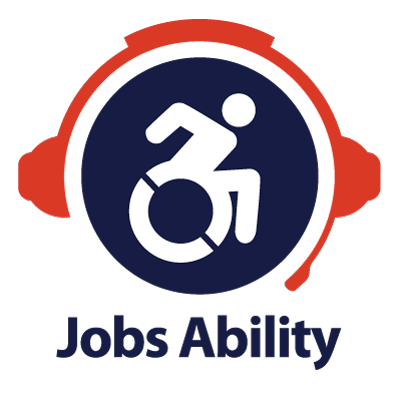PwC Hosts Students in Explore: Ability Boston, NY, LA, Atlanta and Chicago
January 5, 2015COSD
January 16, 2015By Jen Mohn
This is a guest blog entry from Jen Mohn, daughter of Diane Johnson. Jen’s daughter has Arthrogryposis Multiplex Congenita, and AMC awareness day is June 30, 2015. Please wear blue on June 30 to raise awareness and to support individuals with this condition. Please read the blog entry to get a glance into AMC and the challenges individuals with AMC Face. In her 4 years with her daughter, Jen and her family have become incredible advocates for Hannah, people with AMC, and for people with disabilities.
Arthrogryposis Multiplex Congenita (AMC) is a rare symptom to a multitude of genetic diseases. It causes the joints and muscles to become fixed or tight. It typically affects all or most of the joints in the body. Children with arthrogryposis can look “twisted”. There joints can be turned in a completely different direction than what they would normally be. Children with this typically have to have lots of therapy and bracing to help them improve the mobility of the joints.
When I was pregnant back in 2009, I never imagined AMC was going to be a part of our lives. I had never even heard of it. After a routine ultrasound the doctor had some concerns about our baby. She wasn’t moving very much, and her arms and legs seemed to be fixed. After 2 more ultrasounds my OB sent us to Children’s Hospital of Philadelphia (CHOP) Fetal Diagnosis and Treatment Center. After a full day of what seemed like a million tests they sat us in a room and said the words Arthrogryposis Multiplex Congenita. In addition they expressed that they didn’t think that she would survive birth because they didn’t believe she would be able to breathe on her own. Sometimes infants with AMC are not able to breathe due to the contractions of the joints. Even the ribs are affected, and combined with low muscle tone they cannot support themselves. So we prepared ourselves for the worst and carried on through the pregnancy.
Well little did they know Hannah had her own plan.
Our daughter Hannah Faith was born with AMC 4 years ago. Her feet were turned around, her fingers were all crossed, her legs contracted at the hips and her knees were so straight you couldn’t tell she had knee joints. Hannah had a multitude of issues and defects present at birth including a tethered spinal cord, cleft palate, brain abnormalities, breathing insufficiency etc… She has gone through an immense amount of therapy several times a week since birth and has had braces for her hands, feet, knees and hips. Hannah is not able to walk at this point but we are optimistic that she will sometime. She has a lot of determination for even a young child and an even bigger spirit. They have not been able to diagnose Hannah with any specific genetic disease. All the testing that has been done has come back negative. She is part of a study at NIH for a more specific widespread genetic test they are working on.
Mostly because of the AMC Hannah has had several surgeries to correct or help loosen up some of the muscles that are not moving so that she can have some range of motion. She has had 2 surgeries on her feet, 1 on her knees so that she could bend them some and many more. She has had more time in casts than out of them but she is quite the trouper. Serial casting is also a big part of maintaining the gains made with AMC. Once the correction is made or the serial casting is complete the person needs to stay as active as possible and have lots of therapy. As soon as the therapy slows, the joints and muscles begin to tighten again, and it is extremely hard to loosen them again. So someone like Hannah does serial casting at various times to stretch those muscles. If the serial casting isn’t enough, surgery is usually the next step. Unfortunately it is a big part of having this disease.
We have been lucky enough to live in the Philadelphia area, surrounded by some of the best children’s hospitals in the world. Hannah sees several doctors at both CHOP and DuPont. I am not sure Hannah would be as far as she is without all of them. With being so close to these places we have been given some amazing opportunities that I never dreamed of.
During a therapy session Hannah’s occupational therapist mentioned seeing a new piece of equipment that is in development at DuPont. It is a device that is constructed from a 3D printer that allows children who cannot lift their arms up the ability to do so. I was able to set up a time to meet with Dr. Tariq Rahman, the head of the project, and they fit Hannah with the device called a WREX. It gives Hannah so much ability to move her arms that she just doesn’t have without this. It is an amazing piece of equipment! We have even been a part of a show with CNN International that they did on 3D printing! We really wanted to help spread the word about this device because it has given our little girl so much ability and independence.
Some of the medical equipment that has become available is amazing in giving people with disabilities so much independence. They can be a part of everyday activities.
Hannah is a smart, happy and active little girl. She has a spirit like I have never seen. She has overcome so many things that the doctors said she wouldn’t. They have learned with Hannah not to say she won’t do something, it’s now “we have to wait and see what she does” Hannah has AMC it does not define who she is.
